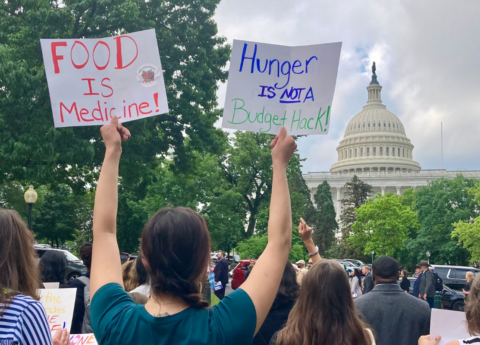Last year when COVID-19 cases were escalating and the bottom fell out of the economy, hundreds of thousands of Kentuckians lost work. For many, this meant losing their health insurance right when they needed it the most. Between March and August last year, the number of uninsured Kentuckians more than doubled. Knowing this, the federal government gave Kentucky permission to start enrolling newly uninsured Kentuckians in a temporary form of Medicaid called “presumptive eligibility,” or PE for short.
This move was a game changer. Because of PE, from March 2020 to March 2021 Medicaid covered over 200,000 Kentuckians who got to keep taking their medicine, seeing a doctor and receiving treatments without going bankrupt. Some even survived their fight with COVID-19 with the help of PE. In fact, one study showed that because of Kentucky’s quick action to cover more people, fewer people died from COVID-19 as a result of coverage gaps compared to most states. This special form of coverage also likely helped keep hospitals — particularly in rural areas — afloat during the worst part of the downturn, sending over $170 million in payments to Kentucky hospitals.
But PE is temporary because it is meant to be an emergency stop-gap for uninsured Kentuckians and only lasts six months. For many of the 125,000 who remain enrolled, June 30 is the end of the line. While it’s likely that many of these folks have either applied for regular Medicaid coverage, purchased health coverage on healthcare.gov or have returned to a job with health benefits (and so are no longer using PE), many others will need to do that this coming week in order to avoid a gap in their health coverage.
Fortunately, the American Rescue Plan Act (ARPA) created a number of new policies to help Kentuckians afford health coverage on the exchange by bringing down premium costs by an average of 40%. Because of this, 4 out of 5 Kentuckians can find insurance on the exchange for $10 or less per month right now, and more than half can find a silver plan with a $0 premium.
In addition to low-wage earners qualifying for $0 premiums, ARPA also established no-premium Silver plans for anyone who received unemployment in 2020 for any amount of time — an option that many Kentuckians who are about to lose their PE Medicaid likely qualify for. While deductibles and co-pays continue to be obstacles and can be costly for these plans, low-wage earning Kentuckians are eligible for subsidies to reduce out-of-pocket costs as well. In a normal year, open enrollment for plans on the exchange would have ended last December, but the Biden administration re-opened the exchange through August 15 so that uninsured Americans have more time to take advantage of these improvements. Even higher-income households will receive reduced-priced health insurance on the exchange for the first time.
While this past year was extremely difficult for many, state and federal government officials have stepped in to make sure healthcare was one less thing to worry about. PE Medicaid has saved lives and livelihoods, and Congress’ quick action to lower the cost of insurance through ARPA has meant that while folks get back on their feet, they can still get the care they need. If we’ve learned anything this past year, it’s that coverage matters. Public coverage has stepped up to stand in the gap here in Kentucky.
Dustin Pugel is Senior Policy Analyst at the Kentucky Center for Economic Policy and Kelly Taulbee is Communications and Development Coordinator at Kentucky Voices for Health.


